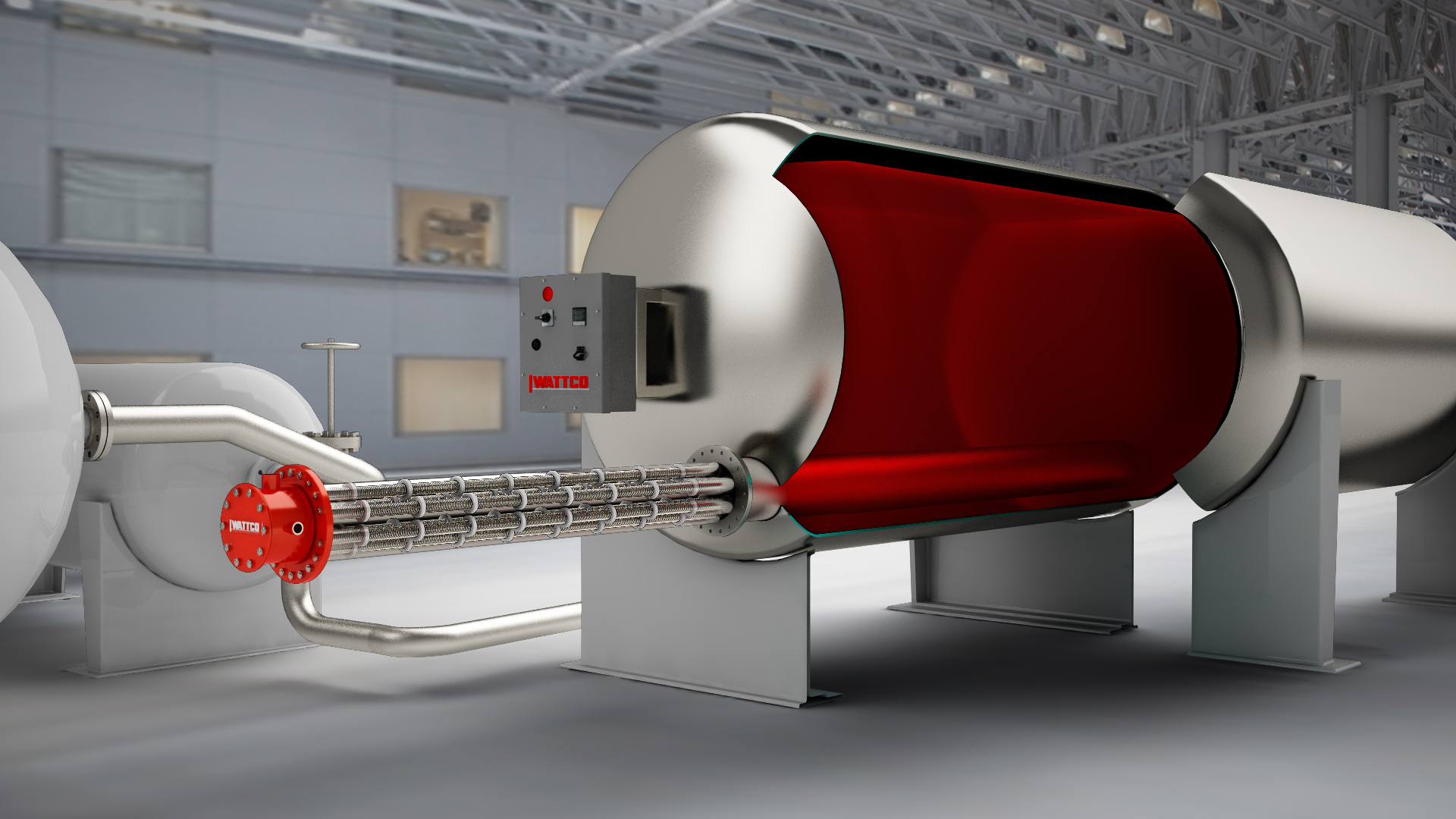Drywell Heaters: An Overview
- Heat prevents the fluid from freezing
- Heat keeps the liquid at the ideal viscosity required
- Heat is often required to initiate a reaction
How Drywell Heaters Work?
Drywell heaters are known as indirect immersion heaters because the heating element is not directly immersed in the fluid (which is the case with direct immersion heaters). Instead, the heating element is enclosed inside a ‘drywell’.
The heat produced by the heating element – through radiation, convection, and conduction – heats up the walls of the drywell, which in turn transfers the heat energy to the fluid touching its outer walls.
These types of heaters offer many advantages, including the added convenience of being able to remove the pipe heater without needing to drain tanks. Also, because the heating elements are isolated from the contents inside the tank, the life of the element is considerably prolonged through reduction of corrosion and buildup of contamination.
Types of Drywell Heaters
Primarily, there are two distinct types of drywell heaters:
1. Weld-in Drywell heaters
2. Direct attachment Drywell heaters
When a tank is being designed or modified, and a permanent heater assembly is required, the weld-in type is preferred as they can be fitted by making a hole in the tank and welded.
On the other hand, an easier approach dictates the use of direct attachment heaters where the heater can be directly attached to the nozzle of the tank.
 Why Choose Drywell Heaters?
Why Choose Drywell Heaters?
There are many reasons why Drywell heaters are a better option as compared to direct immersion heaters. The following factors have to be considered when planning to use direct immersion heaters:
- The size of the tank
- The amount of liquid required to be drained
- The size of the heater, installation and expected lifetime costs
- Storage alternative for the liquid during installation
- Expected downtime, and possible product loss or spoilage
The above factors can generate significant costs not only in terms of resources, but also time.
Another important point, which has been mentioned already, is that some forms of liquids are corrosive and can significantly reduce the life of a heating element. In such applications, Drywell heaters are the only option.
Applications of Drywell Heaters
Some of the popular applications of these pipe heaters are as follows:
- Fuel storage tanks
- Syrup & molasses tanks
- Chemical reactors/mixers
- Degreasing tanks
- Heating of corrosive liquids
- Heating of caustic solutions
Drywell heaters are also utilized for a wide range of purposes across numerous industries throughout the world.

